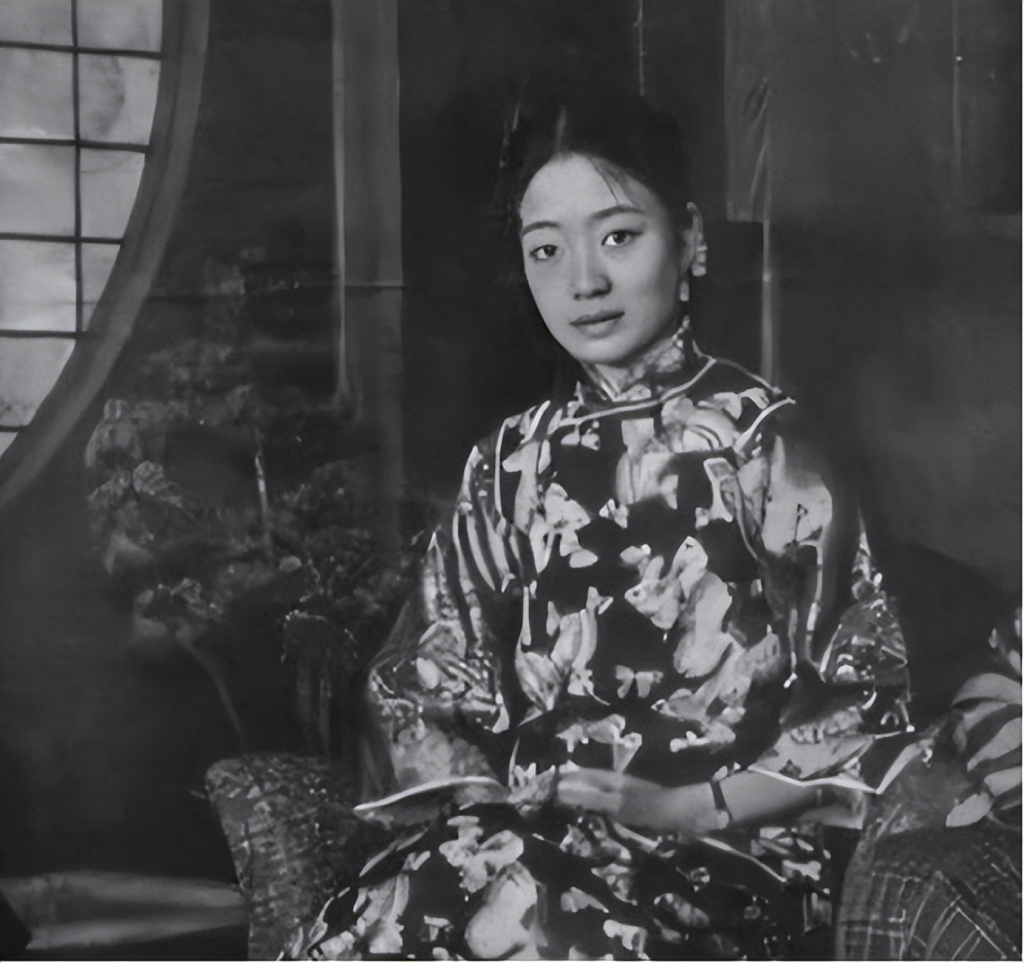n 1906, a child was born in the heart of Beijing, in the residence of Rongyuan, a high-ranking official in the Qing Dynasty’s Imperial Household Department. This girl, named Wanrong, was destined for a life that would swing between splendor and sorrow. Born into the influential Manchu aristocracy, her family was deeply embedded in the political landscape of Qing China.

Her father, Rongyuan, though a man of political power, was progressive in his thinking. He believed in gender equality and advocated for the education of women—an uncommon stance at the time. As a result, Wanrong received an exceptional education, one that blended the traditional Chinese arts such as poetry, calligraphy, and painting, with the influence of Western culture, including a fluent command of English.
From a young age, Wanrong’s beauty and talent were apparent. She quickly became a sensation in noble circles, admired not just for her looks but for her skills in music, chess, calligraphy, and painting. Her elegance was undeniable, and she was considered one of the most desirable women among the royal elite.
As the 16-year-old Puyi, the last Emperor of China, reached the age for marriage in 1922, the search for a suitable empress became a high-stakes affair. Despite the fall of the Qing Dynasty, Puyi still held the title of Emperor within the Forbidden City. A quiet competition unfolded behind the scenes as various noble families and royal courtiers aimed to secure the future empress.
Unlike the traditional selection process where young women were paraded before the emperor, this time, photographs were submitted. Puyi, however, was near-sighted and struggled to distinguish the women in the photos. Ultimately, he chose Wanrong, largely due to her striking appearance and noble lineage—her father, Rongyuan, being an influential figure in the imperial household.
Wanrong’s wedding to Puyi took place on December 1, 1922, in a grand ceremony that, despite the fall of the Qing Dynasty, adhered to the royal traditions. The event was a spectacle, with celebrations that lasted for days, and invitations sent to political figures and foreign diplomats. The lavish ceremony stood as a reminder of China’s royal past.
The early days of their marriage were marked by a sense of joy and novelty. Wanrong, with her refined manners and knowledge of Western culture, introduced Puyi to Western dining and language. They spent time together exploring the world of Western luxury, with Puyi often visiting the finest restaurants and enjoying new gadgets and experiences that his wife introduced him to.
However, their relationship soon faced difficulties. Puyi’s physical issues, particularly his inability to consummate the marriage, became a strain. Wanrong, feeling the isolation and frustration of her marriage, found herself drifting further into despair. Her relationship with Puyi’s other concubine, Wenxiu, also became tense, as the two women competed for the emperor’s attention. Wanrong’s jealousy and resentment began to take root, and the situation in the palace grew increasingly uncomfortable.
By the time they were forced out of the Forbidden City during the 1924 coup by Feng Yuxiang, their marriage was already frail. Wanrong, now living in Tianjin, embraced the modern lifestyle of the era, abandoning traditional Qing attire in favor of stylish qipaos and Westernized fashion. She became a symbol of modern femininity, frequently spotted shopping in high-end department stores and enjoying life in the foreign concessions.
Despite her newfound freedom, Wanrong’s relationship with Puyi deteriorated. His political ambitions, particularly his desire to restore the Qing Dynasty through alliances with the Japanese, alienated her further. In 1931, during the Japanese occupation of Manchuria, Puyi was installed as the puppet emperor of the Japanese-created Manchukuo, and Wanrong’s life took another dramatic turn.
In Manchukuo, she became a prisoner in her own home. Surveillance was constant, and she found her personal freedoms severely restricted. The tension and isolation led her to increasingly rely on opium to numb her pain. Over time, her health deteriorated rapidly. She sank into despair and madness, especially after a tragic event in 1935: her pregnancy and the forced loss of her child. This event pushed her over the edge, leaving her mentally and physically broken.
When World War II ended in 1945 and Japan surrendered, Puyi quickly fled, abandoning Wanrong to suffer alone. She was left in the turmoil of post-war China, where she was imprisoned in Yanji. There, in the harsh conditions of the prison, her health declined further, exacerbated by her addiction to opium and the deplorable conditions she endured.
Wanrong passed away in 1946 at the age of 39, her death a stark reflection of the tragic decline of a woman who once held the title of Empress of China. Her final resting place was unmarked and forgotten, and her life became a tragic footnote in the history of China’s last imperial family. The only physical trace left behind was a yellow smoking pipe, believed to have been hers, symbolizing the suffering she endured until the end.
Wanrong’s life story serves as a poignant reminder of the devastating effects of political intrigue, personal betrayal, and the profound isolation experienced by those who once held power. Her journey from royalty to despair reflects the shifting tides of modern Chinese history, a history that moved from the grandeur of imperial rule to the harsh realities of the 20th century.
Her tragic fate reminds us that even the most glamorous lives are often shrouded in suffering, and that history is often written by the victors—leaving those like Wanrong to be forgotten, her legacy overshadowed by the tumultuous forces that shaped her life.

No comments yet.